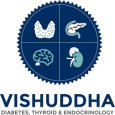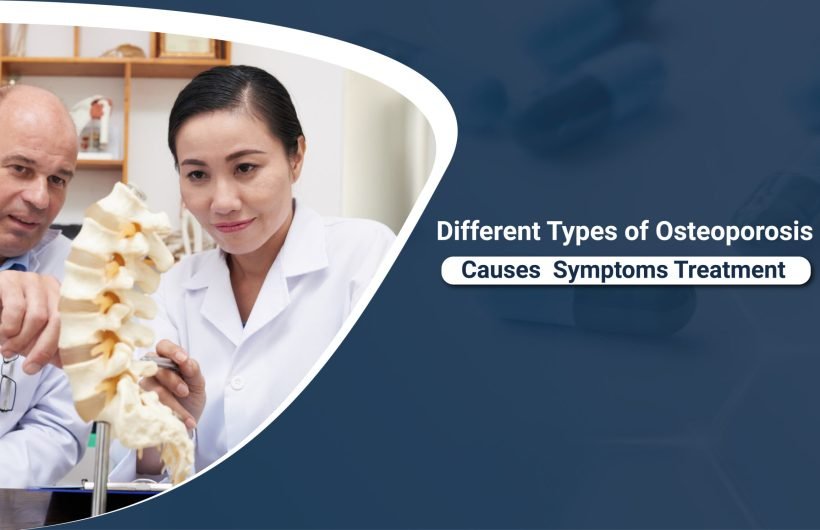Osteoporosis, a disorder that thins the bones, may occur as we age and result in a loss of bone mass. Osteoporosis affects more than 200 million individuals globally and about 10 million people in the United States, according to the American Academy of Orthopaedic Surgeons (AAOS). Due to a lack of symptoms, osteoporosis frequently goes undiagnosed, which makes it one of the riskier aspects of such a large and common ailment.
What is Osteoporosis?
Osteoporosis, a disease of the bones, occurs when bone mass, bone mineral density, or the composition and strength of bone change. Loss of bone density and an increased risk of fractures (broken bones) may arise from this.
Because it typically goes undiagnosed until a bone is shattered, and sometimes even then, osteoporosis is referred described as a “silent” illness. The primary cause of fractures in postmenopausal women and elderly men is osteoporosis. Any bone can break, however, the most common broken bones are the hip, spine, and wrist vertebrae.
What are the types of osteoporosis?
The two kinds of osteoporosis—primary and secondary—are typically distinguished by orthopaedic doctors.
Age-related changes are a factor in primary osteoporosis. The rate of bone loss is correlated with the levels of the hormones progesterone and oestrogen. Osteoclasts, which help to break down bone, are controlled by progesterone, whereas osteoblasts, which aid in the formation of new bone, are controlled by oestrogen. Additional hormones are also important. “Primary type I” and “primary type II” osteoporosis are subtypes of primary osteoporosis.
Primary Type I Osteoporosis
- Postmenopausal women are more likely than other women to have primary osteoporosis. It is connected to the drop in oestrogen levels that occurs when a woman goes through menopause.
- The skeleton is more susceptible to the effects of parathyroid hormone (PTH) when oestrogen levels fall. PTH contributes to increased bone calcium resorption, which thins and weakens the bone.
- The symptoms of osteoporosis are barely noticeable. Most often, people don’t become aware that they have osteoporosis until they suffer an injury and break or fracture a bone. The majority of accidents, such as bending over, lifting objects, jumping, or falling, result in minor trauma or errors.
- While Osteoporosis cannot be totally cured, it is feasible to take drugs to reduce pain brought on by injuries, stop or slow down calcium resorption, and strengthen bones.
Who gets Primary (Type I) Osteoporosis?
- The risk of developing primary osteoporosis is highest in women over 50. Because they might have previously gone through menopause, this is the case.
- Women in their 60s and 70s are more likely to develop primary osteoporosis.
- Primary osteoporosis can affect men, but it is thought that women are eight times more likely to get it than men. Males experience less bone loss than females do, too.
Primary Type II Osteoporosis
Long-term calcium shortage is a prominent cause of type II osteoporosis, also known as senile osteoporosis. Type II osteoporosis affects women twice as frequently as it does men. Type II osteoporosis causes the inner trabecular bone to deteriorate and become thin as well as the loss of the exterior bone structure. According to studies, this illness can be accelerated by dietary calcium insufficiency, ageing-related vitamin D decrease, and secondary hyperparathyroidism, which is an overactive parathyroid gland. Because the rate of bone turnover is significantly slower in primary type II osteoporosis, this condition is also known as low-turnover osteoporosis. Hip fractures are the usual outcome.
Secondary Osteoporosis
When some medical conditions accelerate bone remodelling and impair bone remodelling, secondary osteoporosis results. Due to an imbalance in the amount of new bone being formed compared to the amount of old bone being lost, there is a decrease in bone turnover rate, which results in bone mass loss.
Symptoms osteoporosis
Early phases of bone loss may have no symptoms. However, once you have osteoporosis, you may experience the following indications and symptoms:
- Back discomfort from a broken or collapsed vertebra
- A gradual loss in height
- A slumped demeanour
- A bone that breaks far more easily than anticipated
Causes osteoporosis
Researchers are aware of how osteoporosis develops while not understanding the exact cause. Your bones are made of expanding, living tissue. The interior of healthy bones resembles a sponge. This region is referred to as trabecular bone. A robust outer layer of bone surrounds the spongy bone. This thick coating is called cortical bone.
Osteoporosis weakens the inside of the bone by expanding and multiplying the “holes” in the “sponge”. Vital organs in the body are protected and supported by bones. In addition, bones retain calcium and other elements. When it needs calcium, the body breaks down bone and rebuilds it. This process, often referred to as “bone remodelling,” preserves the bone’s strength while giving the body the calcium it needs.
Up until the age of about 30, you usually gain more bone than you lose. Because bone degeneration outpaces bone creation after age 35, bone mass gradually declines. Osteoporosis accelerates the loss of bone density. Following menopause, bone degeneration accelerates.
Diagnosis of Osteoporosis
In order to find out about your bone health before problems arise, your doctor may conduct a test. The X-rays, which produce very low radiation doses, can be used to assess the strength of the spine, hip, and wrist bones. On normal X-rays, only extremely advanced osteoporosis will be shown.
Every woman over the age of 65 needs to have a bone density test done. The DEXA scan might go more quickly for females who have osteoporosis risk factors. Consider obtaining a bone density test if you’re a man over 70 or a younger man with risk factors.
Treatment osteoporosis
Exercise, vitamin and mineral supplements and pharmaceuticals are all possible treatments for osteoporosis that have already progressed. You might benefit from taking vitamins and exercising to prevent osteoporosis. Weight-bearing, resistance, and balancing exercises are all essential.
Conclusion
In conclusion, osteoporosis is a serious medical condition that affects the strength and density of bones, making them more susceptible to fractures and breaks. The blog “Different Types of Osteoporosis: Causes, Symptoms, Treatment,” provided comprehensive insights into the various types of osteoporosis, their causes, and the symptoms associated with the condition.
Understanding the importance of seeking professional medical guidance and treatment for osteoporosis, we highly recommend consulting an experienced and skilled endocrinologist. Among the top practitioners in this field is Dr. Moxit Shah, a renowned Endocrinologist Doctor in Ahmedabad. With his expertise and dedication to patient care, Dr. Moxit Shah has earned a reputation as one of the best endocrinologists in the area.






